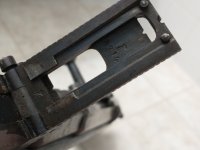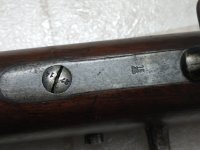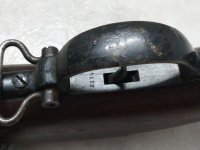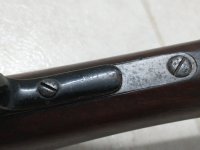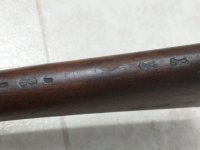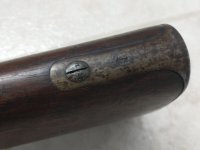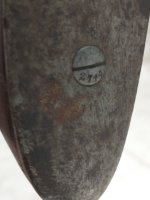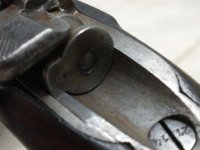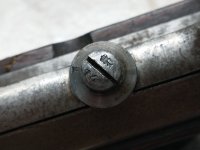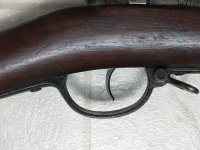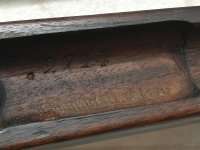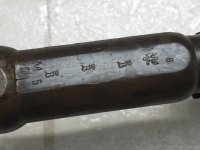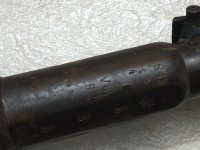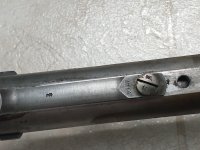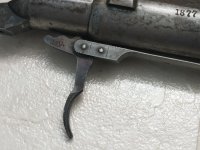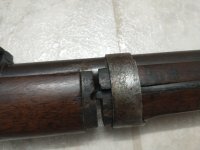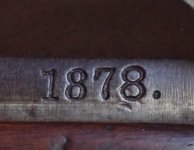Hi All,
Here is another one-- this is a nice matching Spandau M71 IG. This is in great condition by M71 standards with a crisp stock and a good bit of finish left on a barrel. The bands are, as usual, pretty worn, but I believe that is a function of the fragility of the finish used on them. This one does not have a unit mark and likely was pulled from a depot into rear line service during WWI. SN is 2714 with a manufacture date of 1877. There are not a lot of reported Spandaus out there (or of non-Amberg M71s in general)
A couple of cool features that give pretty conclusive WWI provenance--
1) A dufflecut behind the rear band-- not often seen on these.
2) Wartime steel triggerguard-- as outlined in Storz, brass was needed for shell casings and the brass guards removed from a number of M71 rifles to be melted down. They were replaced by a steel guard that was painted (not blued) with a black enamel. The triggerguard screws are m/m, which leads me to believe the replacement process was done as an expedient and effort was not made to match or renumber screws. My Erfurt M71 also has a steel guard and m/m screws, so that's at least another data point for the practice.
All and all a cool example that illustrates some neat WWI traits.
Thanks for looking-
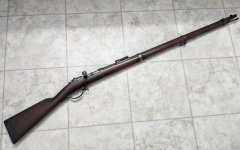
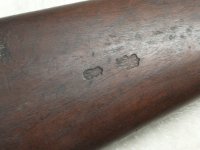
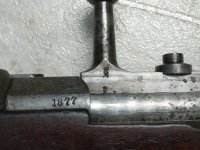
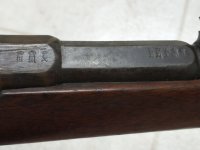
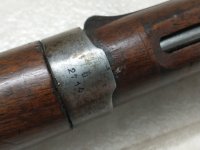
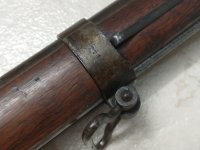
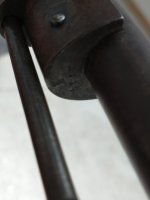
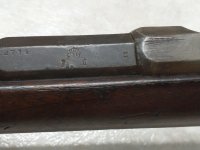
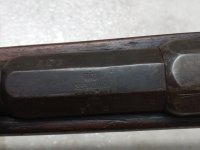
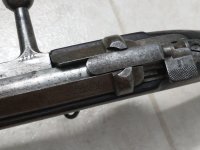
Here is another one-- this is a nice matching Spandau M71 IG. This is in great condition by M71 standards with a crisp stock and a good bit of finish left on a barrel. The bands are, as usual, pretty worn, but I believe that is a function of the fragility of the finish used on them. This one does not have a unit mark and likely was pulled from a depot into rear line service during WWI. SN is 2714 with a manufacture date of 1877. There are not a lot of reported Spandaus out there (or of non-Amberg M71s in general)
A couple of cool features that give pretty conclusive WWI provenance--
1) A dufflecut behind the rear band-- not often seen on these.
2) Wartime steel triggerguard-- as outlined in Storz, brass was needed for shell casings and the brass guards removed from a number of M71 rifles to be melted down. They were replaced by a steel guard that was painted (not blued) with a black enamel. The triggerguard screws are m/m, which leads me to believe the replacement process was done as an expedient and effort was not made to match or renumber screws. My Erfurt M71 also has a steel guard and m/m screws, so that's at least another data point for the practice.
All and all a cool example that illustrates some neat WWI traits.
Thanks for looking-











